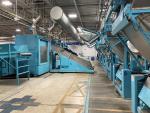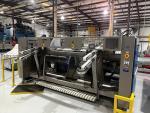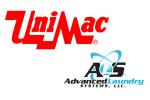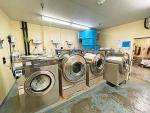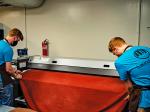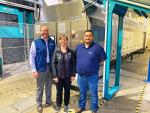CHICAGO — The United States, and the world, have faced many challenges over the past few years, which have led to some unprecedented economic difficulties.
Fortunately, there has been some recovery from the pandemic-induced financial challenges.
However, there are still challenges to be faced.
In its forecast The Budget and Economic Outlook: 2023 to 2033 (February 2023), the Congressional Budget Office says:
- Economic output (gross domestic product, or GDP) is projected to stop growing early this year in response to last year’s sharp rise in interest rates. Output is projected to start growing again during the second half of 2023 as falling inflation allows the Federal Reserve to reduce interest rates, causing rebounds in sectors of the economy that are sensitive to interest rates.
- Inflation was higher in 2021 and 2022 than in any other years of the previous four decades: 5.7% and 5.5%, respectively, as measured by the price index for personal consumption expenditures. The annual growth of that price index is projected to remain above the Federal Reserve’s long-term goal of 2% through 2024 and then fall near to that goal by 2026.
- Interest rates on Treasury securities are projected to rise further in early 2023 and then gradually fall beginning in late 2023.
- The unemployment rate is projected to increase from 3.6% at the end of last year to 5.1% at the end of 2023 before gradually declining to 4.5% by the end of 2027.
These challenging factors mean that laundry and linen services need to be strategic and cautious when it comes to making capital investments in the near future.
MOVING FORWARD WITH CAUTION
The key for laundry operators is to be strategic, and cautious, when it comes to financing capital investments.
“While the Federal Reserve should be slowing down its rate increases,” cautions Steve Hofmann, vice president of operations for U.S. Capital Corporation in Chicago, “we recommend to target as long of a fixed-rate term as possible. The prime rate increased from 3.25% to 8.00% over the last year.”
“I would definitely be careful when it comes to the variable rate because a lot of finance arms, they won’t be upfront,” Joe Lamping, inside sales representative for Milnor Capital in St. Louis, cautions. “They’ll be like we offer this payment and this rate, and then they won’t tell you it’s a variable rate we offer. The payment could change after the first year just because whatever the economic market is could go up or down. I would say it’s very uncertain.
“Again, you don’t really know what the future holds. We learned that firsthand in 2020. So, it’s best to lock something down where you know exactly what your payment will be for all 60 months or all 48 or whatever you choose.”
“Operators should take advantage of the financing options available,” Jennifer Whitney, vice president of business development for Eastern Funding in New York adds. “Do your research and talk to other laundry operators who have a similar project.
“Understand what the lender’s paperwork and cash investment requirements are and do not shy away from a lender who is asking questions to understand your short-term and long-term goals.
“In today’s rising interest rate environment, it would be easy to go with the lowest rate option. But are you getting the value add that you need to meet your long-term goals for your business?
“Laundry operators should be encouraged to seek out a financing partner who understands all aspects of the life cycle of the business.”
“It’s all about the greatest value for the investment,” shares Tina Gough, senior finance sales specialist for Alliance Laundry Systems in Ripon, Wisconsin. “We are all tasked with doing more with less lately.
“Upgrading equipment can make a significant difference, particularly in operations where old models are in use and costing more due to inefficiency and repair costs. Something as seemingly simple as a delayed start feature can help managers staggering staff hours to navigate staffing shortages.
“Managers should be cautious in understanding the difference between price and cost. Often the least ‘expensive’ equipment ends up costing the operation more in the long term. Approach upgrades as an investment, and investments must deliver a maximum return.”
“We do not expect rates to go down for the next few years,” Hofmann shares. “We do expect further industry consolidation with strong operators continuing to be successful.”
“Rates are definitely still on the rise,” Lamping agrees. “Just trying to offset the rate of inflation right now. That’s kind of the only thing that we’re seeing so far is nothing to where anybody is saying we’re heading toward depression or recession.
“It’s kind of just, we’re trying to keep it afloat, just kind of keep on the train that we’re on and without having any really knee-jerk reactions at this point.”
ADVICE FOR THE FUTURE
Hofmann’s top advice for laundry operators looking at financing equipment purchases/upgrades? Target fixed-rate financing as much as possible.
“If you are concerned about the significant investment that many of these purchases or upgrades require, we recommend performing a cost/benefit analysis that includes the cost savings (e.g., utilities) associated with new, more efficient equipment,” he says.
“You should also keep your eyes open in your market. We have seen a number of operators be successful due to their willingness to be opportunistic.”
“The laundry industry continues to innovate when it comes to services offered, technology and equipment efficiency, and improvement in terms of operations and customer service,” Whitney observes.
“Lenders view these improvements favorably and will improve the programs that are needed for the laundry operator to continue to thrive.”
“Manufacturers that have a captive finance arm always will be a resource for financing equipment purchases,” shares Gough. “Depending on the economy, the banking industry may tighten, causing them to require more of a down payment or require more collateral to mitigate their risk.”
Whitney says operators need to maintain good financial records and review them monthly/quarterly to understand when and where costs have increased and when they may need to reevaluate their pricing structure.
“If you do not pay attention, you may miss an opportunity to make improvements to your business,” she says. “Do not be afraid to continue to reinvest in your business by maintaining and upgrading equipment, to minimize maintenance/repair and manage utility costs.”
“Take advantage of new technologies that are coming out,” says Gough. “You cannot improve what you can’t quantify. Laundry manufacturers are integrating new technologies to allow you more in-depth information on KPIs to manage resources, costs and improve inefficiencies.
“Look for finance specials to help reduce payments and upfront investment.”
“I would recommend whatever fits their budget the best, whether if you have all this cash up front and you’re thinking about paying cash for it, it’s best to finance it over like a 24-month term,” Lamping shares.
“Even if you are good at a five-year term and you want to be able to pay it off after a certain amount of time, we can work on that as well. Or, if you want deferred months, we’re just getting going with this new laundry facility, because we have all this extra money to spend, we’re opening up a new plant or something, you want to defer months out to try and more align when you open with when your real payment start.
“That’s why I say be strategic. Don’t just enter into financing because it gets you the equipment quicker and it comes with a low payment. I would say be strategic with what you choose to do when it comes to your payment structure.”
Click HERE to read Part 1 on the recent history of funding and the status of financing today.
Have a question or comment? E-mail our editor Matt Poe at [email protected].



